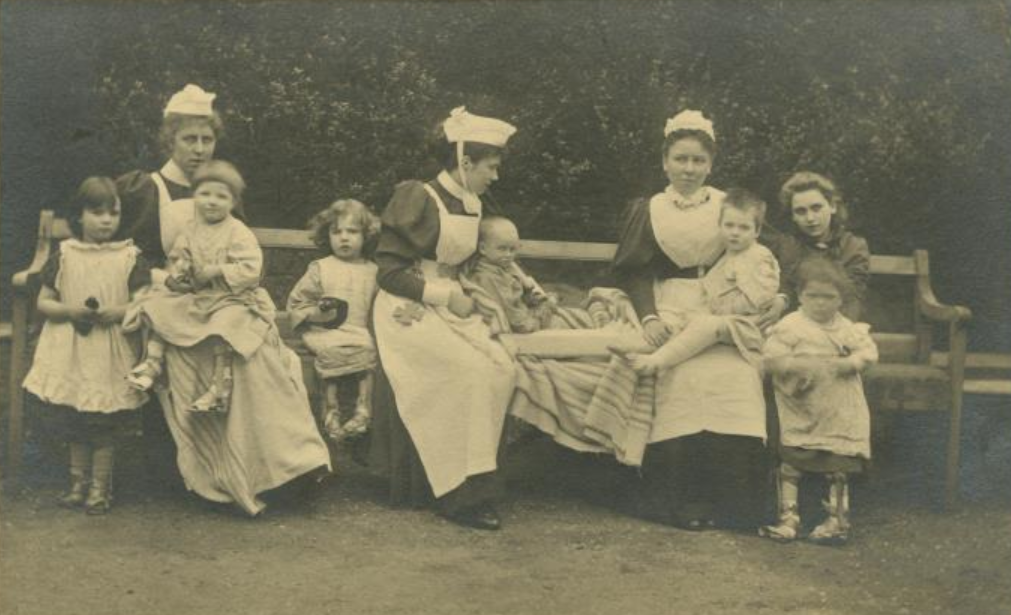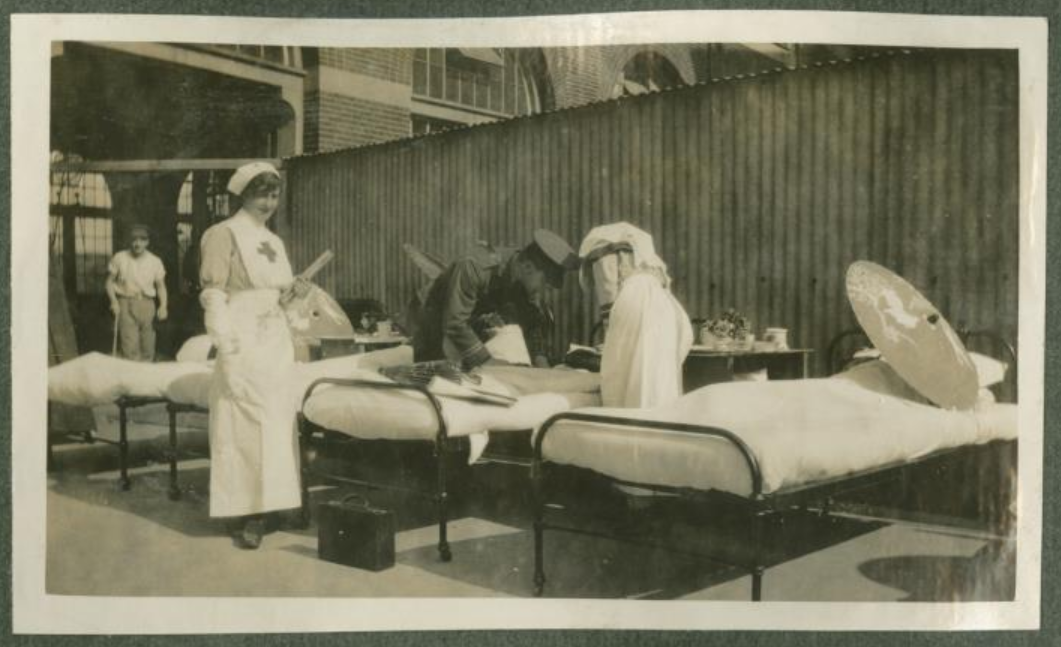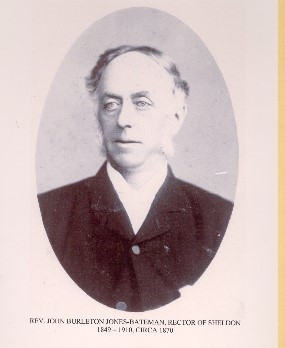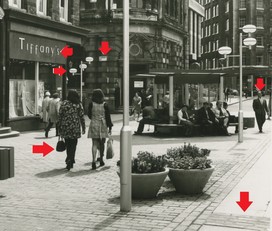|
May 2021
This month we have features on International Nurses' Day, a spot the difference puzzle showing… people shopping!, an article on John Burleton Jones - the first rector of Sheldon and a governor of the Birmingham Eye Hospital, plus another of our wonderful digital jigsaw puzzles - this time with a spring-like feel!
 Clive Davis Postcard Collection [MS 2703].
Cannon Hill Park, Birmingham c1912
This month's online jigsaw comes from the Clive Davies postcard collection [MS 2703]. The collection consists of over 8000 postcards, and provides an illustrated history of Birmingham and surrounding suburbs, and of the production history of post cards through a series spanning from the late 19th century to the 1990s.
Designed by J.T. Gibson, one of the leading park designers of the time, Cannon Hill Park featured here opened in 1873 and went on to become known as Birmingham’s premier public park.
You can find out more about the collection in our blog!
International Nurses' Day has been celebrated since 1965, so is in its 56th year! On Nurses' Day, we say thank you to nursing staff everywhere for the contribution they make to the lives of millions of people. It is celebrated each year on 12 May, the anniversary of Florence Nightingale's birth and this year, it has been announced by the Nursing Times, that “nurse innovation in the face of an unprecedented global health crisis” will be the focus of International Nurses' Day 2021.
To mark International Nurses Day and all the wonderful work nurses do and have particularly done over the last year or so, we thought we’d take you on a pictorial journey of nurses from photographs held in the Archives and introduce you to some of the wonderful health-related collections we have in the Library of Birmingham.
 Photograph of group of nurses and infants at the Royal Orthopaedic Hospital, Newhall Street [WK/B11/1017].
To begin, chronologically, this wonderful photograph taken in 1897 features nurses and patients of the Royal Orthopaedic Hospital. Founded as the Institute for the Relief of Bodily Deformities (1817-1858), it underwent a number of name changes: renamed The Birmingham and Midland Counties Institution (1858-1888), renamed The Royal Orthopaedic & Spinal Hospital (1888-1925). As the photograph illustrates, the hospital also cared for children suffering from, for example, disease of the bones and joints caused by tuberculosis. You can see what else we have relating to the hospital in our Royal Orthopaedic Hospital catalogue. The photo itself comes from our Warwickshire Photographic Survey collection – about which you can also find out much more via our online catalogue!
![Black & white photo: Interior view showing nurses with children in Children's Surgical Ward, cots and a rocking horse are also visible.11/1309]](https://content.govdelivery.com/attachments/fancy_images/UKBCC/2021/04/4356953/wk-b11-1309_original.jpg) Interior view showing nurses with children in Children's Surgical Ward in new General Hospital [WK/B11/1309].
This wonderful 1903 photograph is an interior view with nurses and children in the Children's Surgical Ward at the new General Hospital. It shows nurses caring for young children in a ward obviously designed to cater for their needs with specialist cots and a selection of toys. A note on the back of the photograph states that the ward contained twelve cots and two swing cots, and was furnished by the mistress and pupils of the King Edward VI Grammar School in Birmingham. You can have a look at the General Hospital catalogue online, it is a rich collection with material dating back to Hospital's foundation. In addition, there is an almost unbroken sequence of patient admission and discharge registers from 1779 until the mid-twentieth century, as well as a wealth of other material covering many different aspects of the Hospital's existence!
 Nurse with child in cot maintained by the Jewish Children's Guild of Kindness in the Birmingham Children's Hospital [WK/B11/974].
From 1904 we have this lovely photo of a nurse with a young child in a cot maintained by the Jewish Children's Guild of Kindness in the Birmingham Children's Hospital. Previously the Birmingham and Midland Free Hospital for Children; King Edward VII Memorial Children's Hospital before becoming the Children's Hospital, the principal force behind the foundation of the Children's Hospital was one Thomas Pretious Heslop, who had been House Physician at the General Hospital from 1848-1852. Heslop's experience lead him to believe that children could not be properly cared for in general hospitals and the high level of mortality in the children of Birmingham, coupled with the lack of provision for their remedial care, convinced him of the need to act. On 25 June 1861 an invited group met privately at Heslop's home. The attendees were selected to avoid any political divisions and included local businessmen and professionals, and those experienced in the administration of voluntary hospitals. Heslop's argument for the establishment of a children's hospital was approved and backed by the assembled company and the Mayor, Arthur Ryland, was approached to convene a public meeting. Find out more about the hospital via our online catalogue for the Birmingham Children's Hospital!
 Nurses on the Edgbaston site of the 1st Southern General Hospital [Misc Photos/WW1/Hospitals/1st Southern Gen].
For our last photo, we leap ahead a decade or so to the First World War period. This photograph shows nurses on the Edgbaston site of the 1st Southern General Hospital treating wounded soldiers in an open-air ward. From the outset of the war Robert Saundby (a professor of Medicine at the University of Birmingham) had strongly favoured the open-air treatment of injuries as well as infections, because ‘fresh air is the best tonic, the best antiseptic’. Noting that the university buildings at ‘Bournbrook, Birmingham, have been transformed at very considerable expense into a hospital of 600 beds, but it is likely that many more will be needed’, he recommended new annexes of brick, wood and asbestos sheeting to ‘furnish shelter without diminishing that supply of pure air and light which is necessary to health’.
We hope you’ve enjoyed the photos and the quick intro to just some of the health-related collections held in the Library of Birmingham Archives! You can get a wider sense of the array of health and medicine related collections on our Connecting Histories website.
Happy International Nurses’ Day 2021!
It's been a while since we did a spot the difference - so here's one of Temple Row West, Birmingham... showing shoppers! We're not sure about the date of this photo... but it looks 1970s? [WK/B11/6505] It's a tricky one - you may need to zoom your screen to find the fiendish differences (answer below... no peaking!)


On Sunday 4th November 1849, the twenty second Sunday after Trinity, the newly appointed Rector of Sheldon Burleton Jones Bateman preached his first sermon to the congregation of the parish church of St Giles, the first Rector of Sheldon to do so since 1782. Remarkably it was the twenty second Sunday after Trinity in 1910, sixty one years later that the same Burleton Jones Bateman preached his last sermon to the people of Sheldon, before his death on 29th December 1910. For a clergyman to serve one parish for such a long period of time is almost unheard of.
John Burleton Jones as he was named in the parish register of St Pancras Old Church, was born on 21st June 1825 in Tavistock Square London. He was the eldest son of John Jones of Pentre Mawr Denbighshire and Marianne Jones (nee Burleton) of Baverstock, Wiltshire. John Jones, or as from 1834, John Jones Bateman, was a solicitor at Lincolns Inn. John junior, or Burleton as he seemed to call himself after taking orders, was educated at Winchester school, where he was a keen cricketer although never getting into the school team, and then Gonville and Caius College Cambridge, where he gained a blue in the 1848 varsity match before graduating. He was ordained a Deacon on 4th March 1849 and served as a Curate at St Martin’s Birmingham from March until August 1849. He was ordained Priest on 22nd September and as we have seen took over the Parish of Sheldon later in the year.
In 1851 he got his MA and in 1852 became Rural Dean of Coleshill, also in 1852 he married Marianne Jennens of Small Heath the daughter of John Jennens a manufacturer. They had ten children nine of whom reached maturity. All of his surviving seven sons made their mark in one way or another, three became clergymen including an Arch Deacon of Southern Mexico (later chaplain to the Canadian forces in World War I) and an Arch Deacon of Zanzibar, one became a judge in India, one was a noted surgeon, one was British amateur chess champion and one in a less celebrated achievement became a serial bigamist
It was said of Jones Bateman in his obituary that “few men enjoyed the esteem of a wider circle of friends than the late gentleman. His generosity and kindliness and his unsparing energy in the discharge of his parochial duties and his charitable interest won the regard of all with whom he came in contact”. This can be seen in many ways he was a governor of the Birmingham Eye Hospital, he was involved in the Birmingham Hospital Sunday and Hospital Saturday funds and it has been said that during his ministry the congregation only contributed to two collections per year one for the British Foreign Bible Society and one for the Sunday Hospital Fund, all other parish expenses were paid from his own considerable pocket. Even the week before his death he had himself pushed in his bath chair to visit an elderly parishioner and on the occasion of his last service he was carried over a flooded road to reach the church. He retained his keen interest in cricket and there is evidence of him continuing to play well into his late 50’s at least, and legend has it that W.G Grace once played in the close behind the church.
I think another quote from his obituary sums up Jones Bateman the best “although a man of wealth and position he voluntarily chose the life of labour which falls to the parish priest, and he was most punctilious in the discharge of his duties”
Adrian Neild, Sheldon Library.
|
 |
|
Answers to the spot the difference puzzle
Did you get them all?
|
We hope you've enjoyed this update - it's production is a collaboration between the Archives, Community Libraries, the Library of Birmingham, Library Services at Home, the Mobile Library, and the Prison Library! Our aim is to share Birmingham’s history, archives, and community heritage activities, showcasing our city’s unique and irreplaceable archival collections, keeping you updated about projects and events you can get involved with! In every issue there will be a range of articles and fun quiz activities to involve you with our unique and irreplaceable collections!
Explore the
Archives catalogue here
|
Find out more about the Archives here
|
Explore the Library catalogue here
|
If you no longer wish to receive this newsletter please use the 'unsubscribe' here.
|